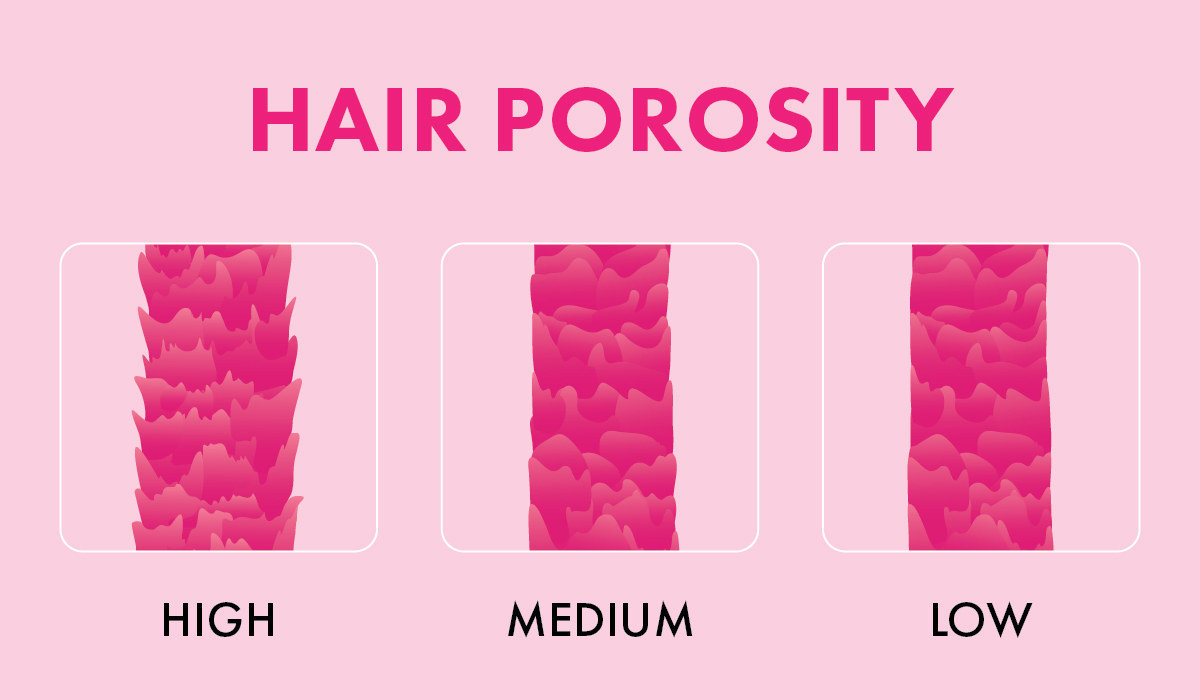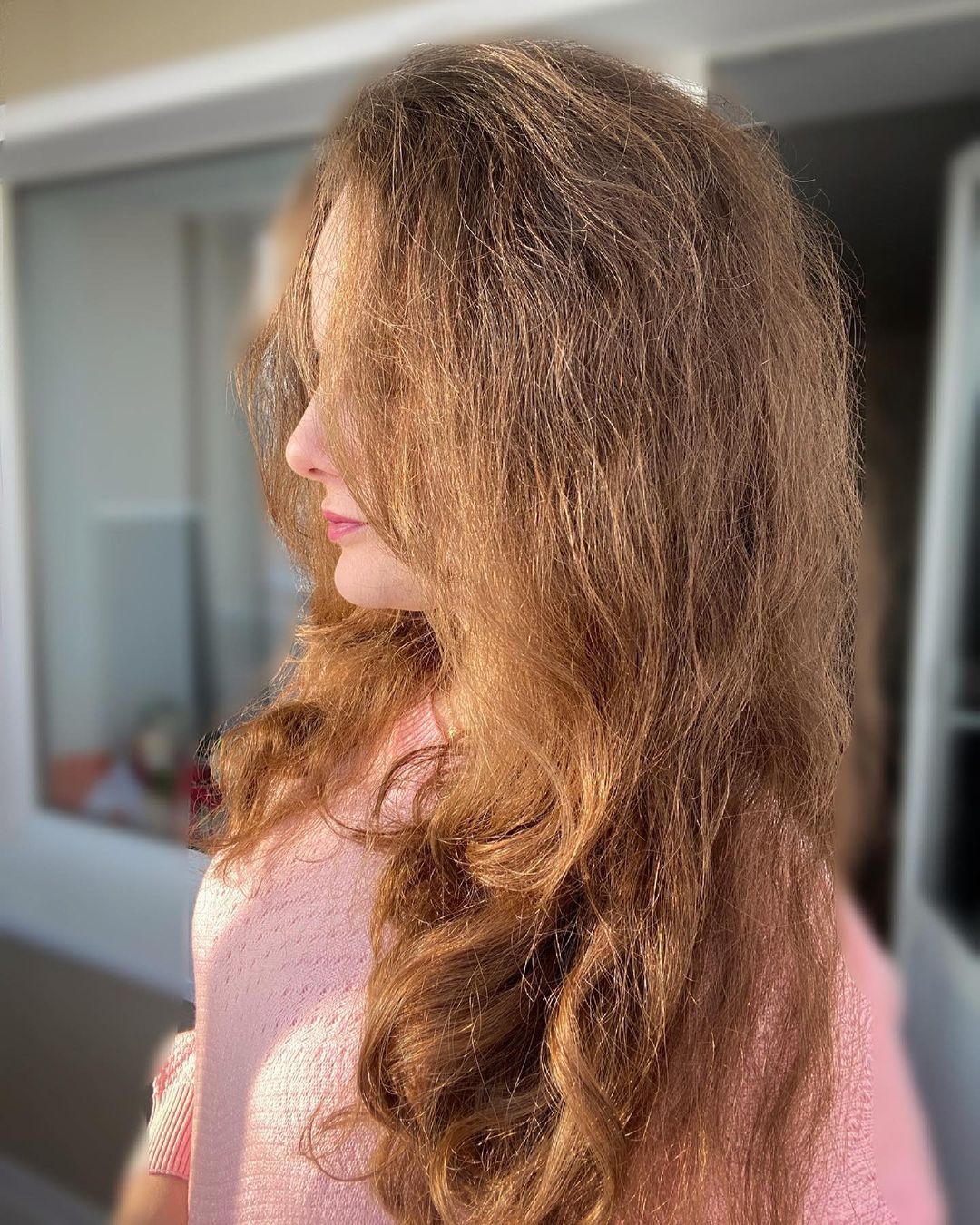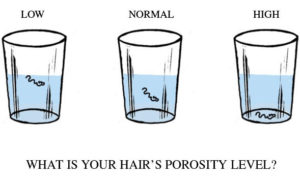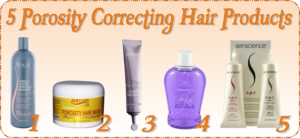Caring For Low Porosity Hair
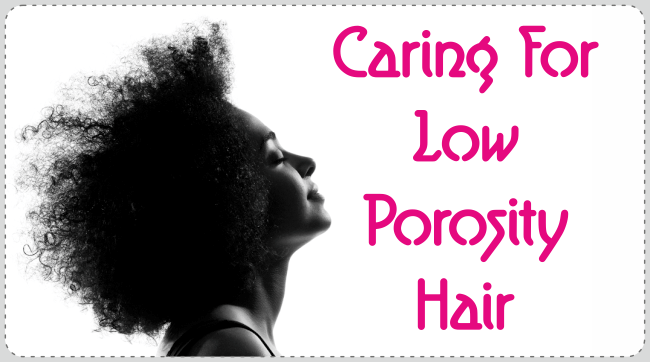
When I went natural two and a half years ago, all I heard people talk about was hair typing and what products are good for each category. Then I spent months trying to figure out if I am a 4a, 4b, 4c and whatever other number category was thrown at me. I thought, knowing my hair type will help me to understand how to moisturize and care for my hair properly. However my hair was straw-like and wetting my hair literally took minutes before it was sopping wet.
Then I heard of natural hair porosity and the different levels. This is when I decided to re-learn my hair. I did a lot of research on hair porosity to see how it applies to my hair and it has been a hair blessing knowing exactly how my hair responds to moisture.
What is hair porosity?
Hair porosity is the hair’s ability to absorb and retain moisture. This is very important to know so that you can choose products and moisturizing methods that are right for your hair.
Hair porosity is broken down into three levels: low porosity, medium (normal) porosity and high porosity. The lower the porosity of your hair, the harder it is to get moisture deep into the hair’s cortex. Knowing where you fall on the porosity scale is very important in your healthy hair journey.
The challenges of low porosity hair and how they affect your hair journey
If you have low porosity hair have you noticed that when you wet your hair it takes forever to get it soaking wet? Or, do you realize that products only seem to sit on top of your hair and do not penetrate your strands very well? These are some of the first signs that you have low porosity hair.
Low porosity hair is normally a little more difficult to moisturize than other hair types. This is due to how the cuticles are structured in the hair. Basically, the cuticles tend to be more flat, smooth and tightly overlap each other; so moisture getting in can be challenging.
Think of the hair as a house with a roof being its cuticle. If the shingles of the roof of the house are tightly laid down with no cracks or lifted shingle, then water will never enter the house. This is how we have to picture the structure of our hair.
 On a very good note, once the moisture gets under the hair cuticle and inside of the hair, it STAYS in for much longer than in other hair types. That is the beauty of having low porosity hair – it retains moisture very well once it gets inside.
On a very good note, once the moisture gets under the hair cuticle and inside of the hair, it STAYS in for much longer than in other hair types. That is the beauty of having low porosity hair – it retains moisture very well once it gets inside.
To find out what your hair porosity is; you should try the hair porosity test. This is where you take a strand of clean hair – with no product – and place in a glass of water. If it floats on top, then you have low porosity hair. If it sinks, then you have high porosity hair. If it stays in the middle, then you have normal porosity hair.
Why knowing your hair porosity matters
I know often we talk about moisturizing our hair and how important it is. Yet, we rarely ever mention hair porosity and without knowing how porous our natural hair is, we cannot effectively moisturize it.
As mentioned above, the cuticles of low porosity hair are flat and tightly overlap like the shingles on a roof. If you do not know how to lift the cuticle slightly so moisture can get in, then you will just be piling products on top of your hair with no benefit. This is why knowing your hair porosity level is very important.
Shampooing matters
Low porosity hair is very prone to product build-up. This is very important to note. So, shampooing or cleansing absolutely needs to be in your regimen. I know natural hair sistas are quick to tell you that you should co-wash and not shampoo because you will wash your natural oils away. This is typically true for some girls but it does not apply to all hair types.
Some natural hair women need shampoo to maintain healthy hair – like those with low porosity hair – so co-washing is not always enough and may even be detrimental in some cases. This is why it is very important to ‘learn your own hair’. Everybody hair is different and what might work for one might not work for the other.
THE KEY: use sulfate-free shampoos or shampoo bars that will effectively clean the hair of all product build-up and provide us with a clean slate to start the conditioning and moisturizing process without stripping our hair and leaving it feeling straw like.
 How to condition low porosity hair
How to condition low porosity hair
Choose conditioners that are lightweight and that can penetrate the hair. Those with low porosity hair should stay away from protein rich conditioners because it cannot effectively penetrate the hair and so, you’re left with your hair feeling straw like and brittle.
Humectants such as honey and glycerin are great for your hair. Choosing products with these ingredients are great. Actually, I do honey treatments all the time and my hair loves it! You should try it.
Heat is your best friend. To get your hair cuticle to be slightly lifted so moisture can get in, you need to use heat when conditioning. Use a steamer or sit under a hooded dryer* with a plastic cap over your hair. Steaming your hair is the best way to deep condition low porosity hair. The cuticles will get raised and moisture will get in. Rinse with warm water.
How to moisturize low porosity hair
Before you start moisturizing your hair, squeeze out as much water as possible so that you have room for your products. Your hair will only take as much moisture as it can physically hold; this is why we must squeeze out some of the water out of our hair first.
Choose lightweight moisturizers – these will be easier to penetrate the hair. Moisturizers rich in penetrating oils like coconut* and olive oil* are great for low porosity hair. I highly recommend the LOC method for moisturizing the hair. Liquid first, then oil, then a cream.
BONUS TIP: Heat your spray bottle. Remember I said that heat is your friend? I wasn’t kidding. Run your spray water bottle under running hot water before spritzing your hair throughout the week. Trust me, it raises the cuticles slightly so you can get some moisture inside then seal with an oil.
Sealing low porosity hair
Seal your hair with light oils that will be easily penetrated into the hair. Light oils that are great for sealing low porosity hair are coconut oil*, olive oil*, avocado oil* and jojoba oil*.
Styling low porosity hair
Low porosity hair can handle heat styling better than hair of higher porosity. However, I suggest against it because using heat incorrectly can damage any hair type and erase all of your hard work. Use heat only if necessary or during special occasions.
Do you care for your hair based its porosity?

